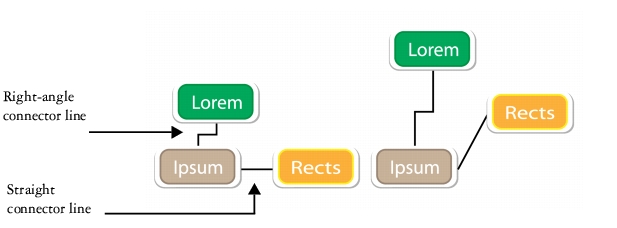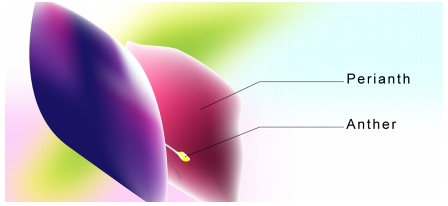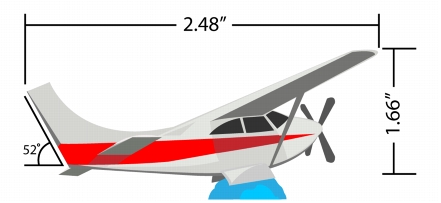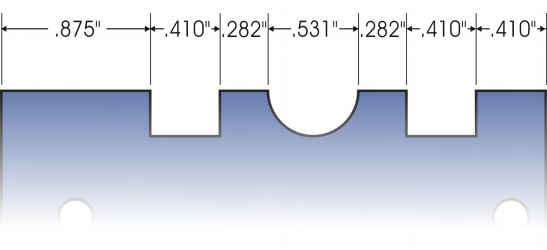
Quick links to procedures on this page:
• |
• |
• |
• |
• |
• |
• |
• |
• |
• |
• |
• |
• |
You can draw connector lines between objects. Objects stay connected by these lines even when you move one or both objects. Connector lines, which are also known as “flow lines”, are used in technical drawings such as diagrams, flowcharts, and schematics. For information about drawing flowchart shapes, see Drawing predefined shapes.
There are three types of connector lines that you can draw. You can draw a straight connector line. You can also draw right-angle connector lines with a sharp corner or a rounded corner. You can edit connector lines by moving, adding, or deleting segments.
Using the controls on the property bar, you can modify the width and style of a connector line as well as apply arrowheads. For more information, see Formatting lines and outlines. You can also change the color of connector lines.

When you move objects, their connector lines remain attached.
You can draw callout lines that label and draw attention to objects.

Examples of callouts
You can also draw dimension lines to indicate the distance between two points in a drawing or the size of objects. By default, dimension lines and the measurements shown on the lines change when you change an object’s size.
You can set how dimension lines are displayed. For example, you can specify dimension units, style, and precision as well as add a prefix or suffix to the dimension text. You can also set default values for all new dimension lines that you create.
By default, dimension text is dynamic. If you resize the object to which a dimension line is attached, the dimension text is updated automatically to display the new size. You can make the dimension text static, however, if necessary.

Examples of dimension lines
To be able to use connector, callout, and dimension lines with precision, you need to snap them to specific nodes in objects. For more information about snapping and snapping modes, see Snapping objects.
| To draw a connector line between two or more objects |
1 |
In the toolbox, click the Straight-line connector tool button, and then click one
of the following:
|
• |
Straight-line connector tool |
• |
Right-angle connector tool |
• |
Right-angle round connector tool |
2 |
Drag from a node on one object to a node on another object.
|
| To change the direction of a connection line |
1 |
In the toolbox, click the Connector tool button, and click the Edit anchor tool
|
2 |
Click the anchor point from which you want to change the connector line direction.
|
3 |
On the property bar, click the Anchor direction button |
4 |
In the Anchor direction box, type one of the following values:
|
• |
0 — directs the connector line to the right
|
• |
90 — directs the connector line straight up
|
• |
180 — directs the connector line to the left
|
• |
270 — directs the connector line straight down
|
You can change the direction of only right-angle connector lines.
|
| To add an anchor point to an object |
1 |
In the toolbox, click the Connector tool button, and click the Edit anchor tool
|
2 |
Double-click anywhere on an object to add the anchor point.
|
By default, anchor points that you add to an object are not available as snap
points for a connector line when the object is moved around in the drawing. To
make an anchor point available as a snap point, select it with the Edit anchor
tool, and click the Auto anchor button |
By default, the position of the anchor point is calculated relative to its position
on the page. You can set the anchor point position relative to the object that it
is attached to, which is useful if you want to set anchor points in the same
relative position in multiple objects. To set the anchor point position relative
to the object, select the anchor point with the Edit anchor tool |
| To move or delete an anchor point |
| To set a connector line to flow around objects |
1 |
Using the Pick tool |
2 |
Click Window |
3 |
In the Object properties docker, click the General tab.
|
4 |
Enable the Wrap connector line check box.
|
To flow around an object, a connector line must be attached to the object by
at least one end.
|
| To add a text label to a connector line |
1 |
In the toolbox, click the Connector tool button.
|
2 |
Double-click the connector line.
|
A text cursor appears. |
3 |
Type the text.
|
As you move the connector line, the text label remains attached to it.
|
| To draw a callout |
1 |
In the toolbox, click the arrow in the bottom-right corner of the Parallel
dimension tool |
2 |
Click where you want the first callout segment to start, and drag to where you
want the first segment to end.
|
3 |
Click where you want the second segment to end.
|
A text cursor |
4 |
Type the callout text.
|
|
You can also
|
|
|---|---|
|
Change the callout style
|
Choose a style from the Callout symbol box.
|
|
Change the distance between the leader line and the callout text
|
Type a value in the Callout gap box.
|
If you want to edit the callout line and callout text independently of each other,
you first need to separate the callout line from the callout text by clicking
Arrange |
| To draw a vertical, horizontal, or parallel dimension line |
1 |
Do one of the following:
|
• |
To draw a parallel dimension line, click the Parallel dimension tool |
• |
To draw a vertical or horizontal dimension line, open the Dimension tools
flyout by clicking the arrow in the bottom-right corner of the Parallel
dimension tool |
2 |
Click to place the starting point, and drag to where you want to place the endpoint
of the dimension line.
|
3 |
Move the pointer to position the dimension line, and click to place the dimension
text.
|
By default, dimension text is centered on the dimension line. |
| To draw an angular dimension line |
1 |
In the toolbox, click the arrow in the bottom-right corner of the Parallel
dimension tool |
2 |
Click where you want the two lines that measure the angle to intersect, and drag to
where you want the first line to end.
|
3 |
Click where you want the second line to end.
|
4 |
Click where you want the angle label to appear.
|
| To draw a segment dimension line |
1 |
In the toolbox, click the arrow in the bottom-right corner of the Parallel
dimension tool |
2 |
Click the segment that you want to measure.
|
3 |
Move the pointer to where you want to position the dimension line, and click
where you want to place the dimension text.
|

Segment dimension lines can be applied automatically to selected successive segments.
| To set the display of dimension units |
1 |
Select a dimension line.
|
2 |
On the property bar, choose options from the following list boxes:
|
• |
Dimension style — lets you choose fractional, decimal or standard dimension
units
|
• |
Dimension precision — lets you choose a level of precision for the
measurements
|
• |
Dimension units — lets you choose the unit of measurement
|
| To set default properties for new dimension lines |
1 |
From the toolbox, double-click the Parallel dimension tool |
The Dimension tool page of the Options dialog box appears. |
2 |
Specify the dimension style, precision, and units, prefix, and suffix.
|
| To customize extension lines |
1 |
Select a dimension line.
|
2 |
On the property bar, click the Extension lines options button |
3 |
To specify the distance between the extension lines and the object, enable the
Distance from object check box, and type a value in the Distance box.
|
4 |
To specify the length of the extension overhang, enable the Extension overhang
check box, and type a value in the Distance box.
|
|
|
Copyright 2010 Corel Corporation. All rights reserved.